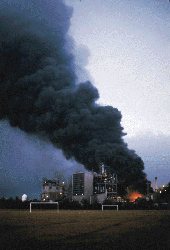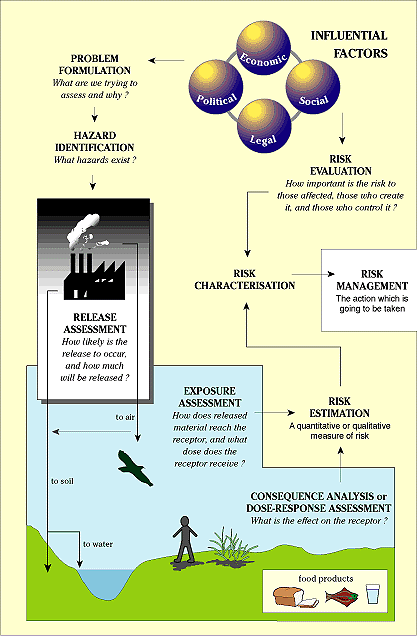|
Chapter 4: Overview of risk assessment methods
This chapter examines the steps required in all types of risk assessment. As seen in Chapter 3, the number of hazards that can be examined through ERA is vast, and numerous specific techniques have developed to cope with the characteristics of different hazards. Techniques have also evolved differently due to the institutional basis of the risk assessor and the intended use of the risk assessment.
On first sight, the type of risk assessment carried out within an industrial plant will bear little relation to that carried out by a regulatory agency. In the scientific literature, the model developed by the National Academy of Sciences (NAS) in the US in 1983 (NAS, 1983) which looks at chemical risks to human health is widely used and accepted. This method, which has formed the basis of the EU's new and existing chemicals legislation, is the predominant model in human health risk assessment, used by regulatory or policy-making organisations and the methodology does not fit well with site-specific or process/plant risk assessments. In site-specific assessments, an additional step examining how, why and when the hazards are going to get into the environment is required. It is most easily applied to chemicals and excludes any of the social aspects of risk that make risk assessment such a complex task.

Dave Ellison,
Environmental images
|
There are a number of unifying principles underlying all risk assessments. These underlying principles are developed from those laid down by Covello and Merkhofer (Covello and Merkhofer, 1993).
ERA will include a number of steps:
- Problem Formulation
- Hazard Identification
- Release Assessment
- Exposure Assessment
- Consequence Assessment
- Risk Estimation
|
Environmental risk assessment is also likely to include a step specifically excluded from the NAS model, that of risk evaluation. This step has been laid down in the European legislation on new and existing substances.
A diagrammatic representation of this model is shown in Figure 4.2.
The book explains in detail each of the above steps in the risk assessment procedure and illustrates its use by looking at the use of ERA as a decision-making tool for the siting of a new refuse incinerator.
Figure 4.2 The elements of risk assessment (source: R. Fairman and C. Mead)

Reference list for this chapter
|

Document Actions
Share with others